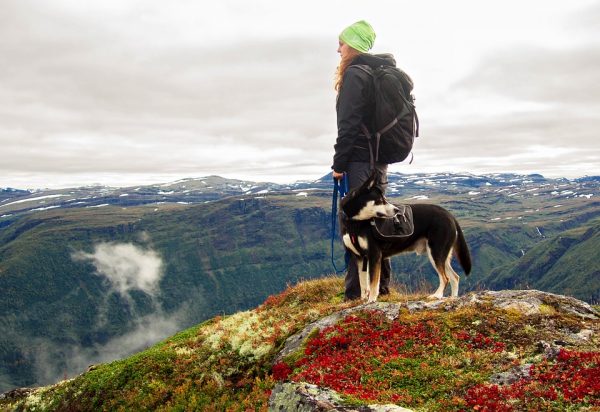Winter hikes can be such an exciting experience for so many reasons. The trails tend to be less crowded and quieter. The woods are almost like a completely different world when the leaves fall, and you have the chance to try out seasonal activities like snowshoeing or Nordic skiing.
For dog owners, I can assure you that your furry friend wants to check these things out as well. Hiking with your dog is a blast, but winter brings different conditions and risks. Here are five tips to keep in mind when going on cold weather hikes with your dog.
RELATED: 5 Potential Dangers of Hiking With Your Dog
Gear Up
Depending on the temperature or the amount of snowfall, the gear you’ll need will vary. As a rule, though, be sure to bring the following basics: brightly colored leash, bowl(s) for food and water (collapsible bowls are great space-savers), booties to protect against frostbite or icy build-up in your dog’s fur and a jacket if your dog doesn’t have a lot of fur.
Choose Your Trail Wisely
During winter, the snowy conditions can bring a whole new level of risk, even to your favorite trail. Some trails just won’t work for winter hikes with your dog, due to deep snow or long distances, so keep this in mind when you’re planning your hike.
Practice Makes Perfect
This is more of an issue when your dog isn’t used to winter hikes, as you don’t want to push them too much too soon. To get your pooch used to the snow, try a few trial runs at a park or around the block. Longer trails may require a bit more training, as well, on both your parts.
RELATED: Best Trail Diet for Your Hiking Dog
Plan B
You can never really plan outdoor activities with 100% certainty and winter hikes with your dog are no exception. Your dog may get tired or cold, making finishing your planned hike difficult or impossible. Plan for this by mapping out a good spot along the trail to turn around if necessary, or choose an off-shoot of the main trail that will shorten the hike altogether.
Rest Your Paws Often
Taking frequent breaks during your hike will allow you to monitor your dog’s health and energy levels along the way. Use this time to inspect their paws for any ice or snow build-up, feed them and provide water or decide if you need to turn around. Remember, at the end of the day, your dog’s safety is more important than completing the hike.








